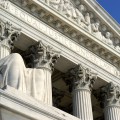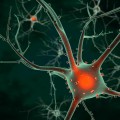 On May 14, in a personal and somewhat controversial op-ed piece for the New York Times, actress and director Angelina Jolie admitted to having a double mastectomy as a preventative measure against a rare type of breast cancer. Her admission prompted a discussion in the media about raising awareness for genetic testing and the current state of gene research in the health field, which, in recent years, outgrew the laws governing it.
On May 14, in a personal and somewhat controversial op-ed piece for the New York Times, actress and director Angelina Jolie admitted to having a double mastectomy as a preventative measure against a rare type of breast cancer. Her admission prompted a discussion in the media about raising awareness for genetic testing and the current state of gene research in the health field, which, in recent years, outgrew the laws governing it.
Jolie says the mutated gene, BRCA1, increased her risk for breast and ovarian cancer. She continues, saying carrying the gene results in a 65 percent increased risk of developing breast cancer, on average. After the preventative surgery, she says her risk decreased to under 5 percent. Jolie says the announcement was for the benefit of other women who might benefit from her experience. She says, “Today it is possible to find out through a blood test whether you are highly susceptible to breast and ovarian cancer, and then take action.” However, she expressed concern on the availability of the test, saying some women could not afford testing.
In a press release, Myriad Genetics says the same testing Jolie underwent is now covered in the Affordable Care Act. For insured American women, the cost is covered; yet, the clarification was only recently established. Previously, there was confusion over whether the guidelines covered the test itself or genetic counseling, but now both qualify.
Meanwhile, in the Supreme Court, a battle looms over Myriad Genetic’s patented BRCA1 and BRCA2 genes — the former being the gene that affected Jolie and led to her preventative double mastectomy. If a gene is patentable then other medical professionals cannot examine the gene, preventing treatment for others outside of Myriad’s care, according to the original petition by The Association for Molecular Pathology. This presents a unique obstacle for gene research: Technological advancements like the discovery of the BRCA1 and BRCA2 genes move at a faster rate than the law can cope with.
The right to patent these new technologies remains unchanged; therefore, licensing requirements remain lax. The line between what is property and what is accessible to millions of people is obscured, but with the Supreme Court decision slated for sometime in June, the policies ruling patents could change significantly, and could make strides in the law’s ability to change with new technologies.
[cf]skyword_tracking_tag[/cf]






No Comment